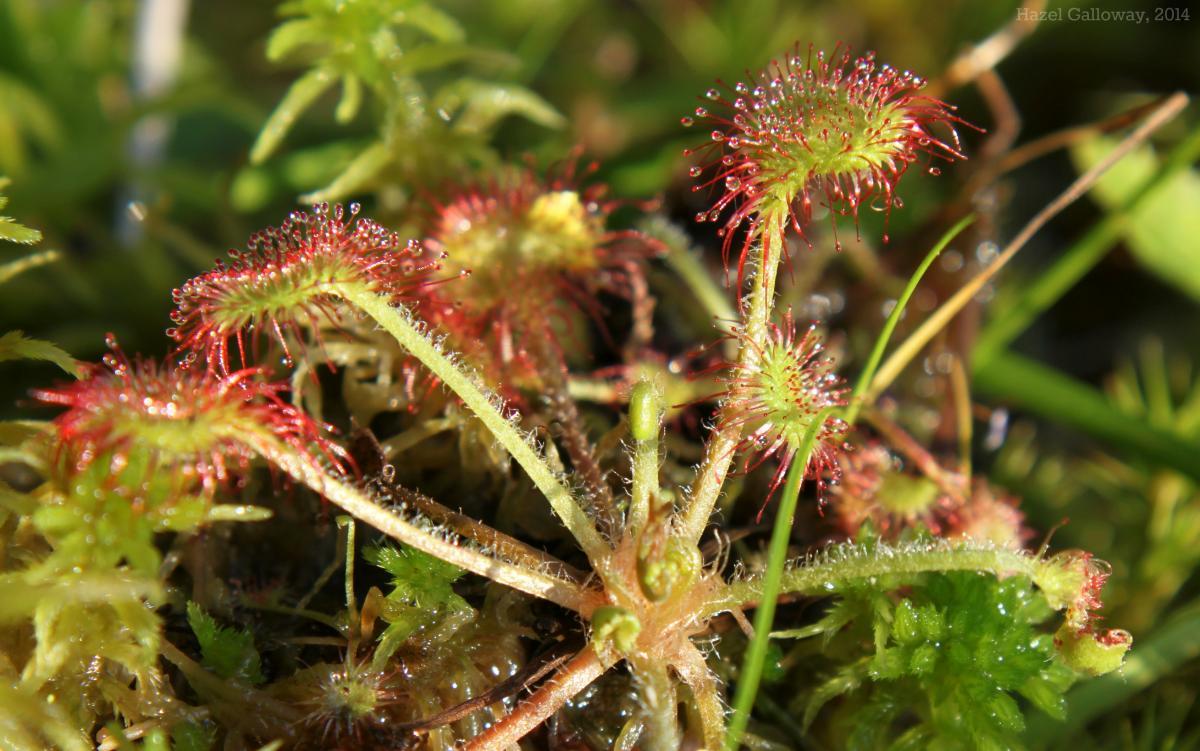Few plants are built to thrive in stagnant wetlands. When standing water is never flushed by a stream, tannins released by decaying plants become concentrated and the water can grow as acidic as a cup of coffee (pH 4.5). Microbes that break down dead plants and animals can't thrive in these conditions, which deprives bogs of the nutrient cycling necessary to return nitrogen to the soil, thereby preventing the growth of new plants. Even when nutrients are available, an acidic environment can complicate plants’ ability to absorb them. Such conditions make life in the wetlands difficult or impossible for most plants—allowing the few species with extraordinary adaptations to thrive with very little competition.

Carnivory — meat-eating — in plants is alien enough to captivate the imagination, from the Broadway musical Little Shop of Horrors ("Feed me, Seymour!") to the 1951 novel The Day of the Triffids, set in a post-apocalyptic world beseiged by seven-foot, lethal carnivorous plants supposedly engineered by the USSR. But for an organism forced to eke a living from a nutrient-poor bog, turning from languishing roots to insect-ensnaring leaves is an excellent survival strategy. One of just two carnivorous plants found near MLBS (the other is a nonnative pitcher plant), Drosera rotundifolia takes the form of a basal rosette of small, round leaves located at the ends of short stalks. The leaves are covered with reddish tentacle-like structures, each baited with a gland that exudes a mixture of nectar, adhesive compounds, and digestive enzymes. Once lured by the scent of nectar, insects find themselves trapped by the liquid on the glands; their struggles stimulate the surrounding stalks to fold inwards in a movement that can take minutes or hours, depending on the species. Although D. rotundifolia eschews the high-speed dramatics used by Venus flytraps and some other species of sundew, its leaves slowly but surely move to enfold the insect as the process of digestion begins. As proteolytic digestive enzymes released by the glands break down the insect, its nutrients are absorbed directly through the leaves.
Sundews that catch more insects have more leaves and are able to produce more new ones as a result. However, it seems that the relative importance of insect consumption to the plant’s health depends largely on nitrogen levels available in the soil. This effect was seen in a 2012 Swedish study by Miller, et al. According to their findings, sundews with access to the lowest levels of nitrogen deposition recieved 57% of their nitrogen from prey, whereas plants in bogs with intermediate and high nitrogen deposition levels depended on insects for just 22% and 33% of their nitrogen, respectively.
Because they are protected from competition by the nutrient-poor soil where they thrive, sundews are extremely sensitive to excess nutrients from fertilizers or other human activity. They are also threatened by the destruction of wetlands for farming and development; half of the wetlands found in Virginia during the colonial period have been drained or built over, and far more are polluted by runoff fertilizers and other contaminants. Although they are easily shaded out by any competition, sundews have also been observed to invade sites of peat mining, ditching, and burning in bogs, capitalizing on the disturbance that stymies the growth of more nutrient-dependent species. Because their needs are so specific, sundews and many other carnivorous plants are considered indicator species of environmental quality.
Sundews are perennial, each summer producing one-sided racemes with tiny, white insect- or wind-pollinated flowers. The seeds from mature fruits are not dispersed until the fruit begins to rot, at which point they may be carried away on snowmelt or flooding due to air trapped within the seeds. They also reproduce vegetatively, forming plantlets from leaf or axillary buds that then separate, becoming new rosettes.
Henry Wilbur collected this individual in Mann’s Bog, several miles off the Appalachian Trail past Wind Rock.
Hazel Galloway
Sources:
- Millett, J, et al. "Reliance on prey-derived nitrogen by the carnivorous plant Drosera rotundifolia decreases with increasing nitrogen deposition." New Phytologist 195.1 (2012): 182-188.
- https://www.washingtonpost.com/national/health-science/study-says-us-cant-keep-up-with-loss-of-wetlands/2013/12/08/c4801be8-5d2e-11e3-95c2-13623eb2b0e1_story.html?utm_term=.f07a99b33839
- http://www.fs.fed.us/database/feis/plants/forb/drorot/all.html
